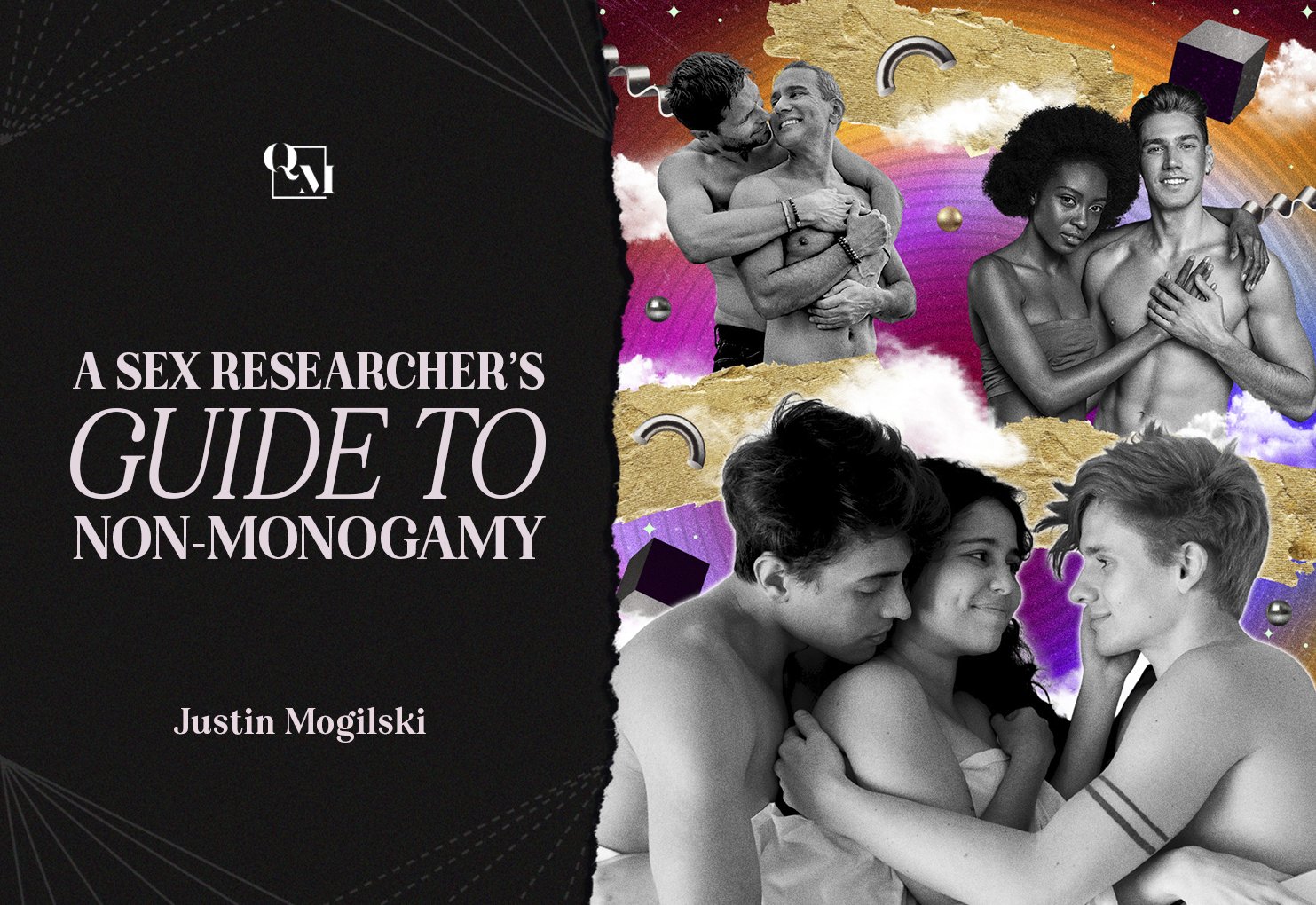It Takes a Village: Why Polyamorous Families Need Legal Recognition
As my family and I hung Christmas lights on our six-bedroom house, preparing for another big family holiday, I couldn’t help but reflect on how much love fills our home. The four of us decorating, hanging the wreath, setting up the nativity, and throwing garland on the banister, all while taking turns holding the baby, is the kind of idyllic family scene that could have come straight out of a Norman Rockwell painting — with one small twist: we’re polyamorous.
Polyamory, from the Greek prefix poly- meaning “many” and the Latin root amor meaning “love”, refers to romantic relationships between consenting adults where monogamy is not expected. Polyamorous people still make commitments to their partners — just not monogamous ones. My wife, Talia, who’s a bit of a stickler for language, once joked: “Polyamory is wrong. You shouldn’t mix Greek and Latin roots.” While she’s right linguistically, we both agreed that as a relationship model, it works beautifully for us.
With four parents — myself, my wife, and our two partners — our five-month-old daughter is, as a friend once put it, “probably the most loved child in the world.” People have told us that she has many of my Germanic features and Talia’s Asian eyes, but “she looks most like her other dad” — who, sometimes unbeknownst to them, is not the biological father. And before you’re tempted to crack jokes, yes I know I am. We used in vitro fertilization (IVF), so no paternity has ever been more certain.
Polyamorous families like ours face unique legal challenges in the United States. Despite the love and stability we provide, the law doesn’t automatically recognize all of us as parents, partners, or even equals in the way it does for monogamous couples. Fortunately, we live in California, one of the few states, along with a handful of progressive cities, where polyamorous families can secure some legal protections. The problem is, the process is arduous, time-consuming, and expensive — barriers that put this kind of legal recognition out of reach for many families. And while California law was ultimately on our side, these protections stop at the state line. In many areas of the country, our family would have none of the legal rights we’ve worked so hard to secure, thanks in large part to the opposition of many social conservatives. What’s ironic is that polyamory is, in fact, one of the most traditional, pro-family, and pro-child ways of living.
When Talia and I — both of us bisexual — decided to formalize our relationships with our other partners, we knew it wouldn’t be simple. Unlike married monogamous couples, we couldn’t just go to the courthouse and apply for marriage licenses. Instead, we hired a specialized attorney in San Francisco to draft a complex series of contracts to approximate the rights that marriage confers automatically.
For example, we created a family trust to ensure shared assets and inheritance rights for one another, and to guarantee our daughter would inherit from all her parents, not just her biological ones. This step is crucial to our financial and emotional well-being as a family. Beyond that, having four parents means more income, which benefits our daughter in countless ways, from the security of a stable home to the contributions all of us make to her college fund. In fact, she is fortunate to have grandparents on all four sides who also contribute generously to her college fund, ensuring that she’ll be well-prepared for the future.
Another hurdle was healthcare decision-making. We had to draft living wills and medical power of attorney documents naming each other as decision-makers and hospital visitors. Without these documents, many families like ours find themselves shut out in times of crisis — denied access to their loved ones simply because they lack legal recognition.
The most time-intensive process was securing legal parenthood for our partners. This will allow them to do basic things like pick our kid up from school, attend parent-teacher conferences, and make medical decisions on her behalf. Ultimately, our petition had to be granted by a local court in our rural county, where Republicans won overwhelmingly in the last election. We worried initially that a more conservative area might not be amenable to granting such a request, but we were heartened by the court’s ruling, which found that it was in our daughter’s best interest to have more than two parents legally recognized. This reflects an important point: many conservatives understand the importance of family and protecting children’s best interests, and families like ours exemplify those values.
One unique aspect of our parenting agreement is a clause that ensures our daughter’s residency remains in California or Hawaii — two states where we own homes, have laid down roots, and where our family’s rights are legally protected. This doesn’t mean she can’t travel; in fact, she’s likely to grow up as a very well-traveled kid. But until she’s an adult, she’ll be a resident of one of these two states to ensure her family’s stability and legal rights remain intact.
Interestingly, anthropologists have found evidence suggesting that our modern fixation on monogamy and nuclear family structures may be relatively new. In many hunter-gatherer societies, tribes would often come together to support all children collectively, and rigid notions of exclusive biological parenting were less significant. Monogamy, some argue, emerged largely as a byproduct of agricultural societies, where land ownership and inheritance made biological parenthood more critical. Our family structure, far from being unconventional, might actually be returning to something even more natural and traditional.
This point is echoed in many highly traditional cultures where multigenerational families remain the norm. According to Pew Research, 38% of the world lives in extended families, including nearly half of Asia and more than a quarter of Europe. In our rural northern California community, for example, it’s common for grandparents, parents, and children to live under the same roof, supporting each other in ways that benefit everyone involved. While our family isn’t multigenerational in the strictest sense, my mom does have first dibs on our downstairs guest room when she’s visiting. Every family is unique, and there are many ways to create a loving home, but the underlying principle is universal: children thrive when they’re supported by a broad and loving network.
The lack of federal recognition for polyamorous relationships mirrors the legal challenges faced by same-sex couples before marriage equality became law. If that comparison seems inappropriate, consider this: according to a 2021 study, 10.7% of US adults have been involved in polyamorous relationships and 16.8% are interested in doing so. By contrast, 7.6% of the US are LGBT. Without federal protections, families like ours are left vulnerable, especially if we move to a state that doesn’t recognize our agreements. The patchwork of state laws means that families can lose their legal rights overnight simply by crossing state lines.
This disparity isn’t just a logistical issue — it’s a matter of fairness. Families like ours shouldn’t have to spend years and thousands of dollars to secure the same basic rights that monogamous couples receive automatically. And while some argue that polyamory is unconventional, the reality is that our structure provides enormous benefits.
For our daughter, having four parents means there’s always someone there to support her. She gets more attention, more love, and more resources than most children — a far cry from the idea that smaller family structures are the only path to stability. In fact, it’s the very embodiment of the old adage: it takes a village.
This holiday season, our home will be brimming with family, friends, and tradition. Our Christmas tree is adorned with ornaments collected from our travels. Shaped like Dutch windmills, Bavarian cowbells, and critters from every corner of the globe, each one is a memory of a shared adventure together. Gathered around our piano, we’ll sing Christmas carols, including the religious ones, which we find particularly beautiful and meaningful. The sideboard will be covered with food from local family-owned farms, complete with deviled eggs from our own chickens. And our baby daughter will be passed from lap to lap, surrounded by love and joy.
As one particularly special and amusing tradition, Talia hand-knits stockings for every member of the family — including our pets. She even does this for guests every year — and, yes, even for their dogs. Soon, the house will be full of wagging tails and the clatter of paws on hardwood floors. As I write this, there are 15 hand-knitted stockings hanging on the mantle of our glowing fireplace, tangible reminders of how full and warm our home and hearts are.
Conservatives often tout the benefits of two-parent households, arguing that children fare better with both a mom and a dad. But by that logic, shouldn’t having three or four parents be even better? Studies consistently show that children thrive in environments where they feel loved and supported, in stable homes where their needs are met, regardless of the sexual orientation of the parents. In fact, surprisingly, if anything, children of same-sex parents tend to fare slightly better on average — likely attributable to the fact that adoption, like polyamorous parenting, requires jumping through more hoops — and thus filters for people with greater responsibility.
We’re raising our daughter to appreciate both progressive ideals and traditional values, grounded in love, stability, and community. Far from being in conflict, these values reinforce one another. Our polyamorous, bisexual, multiracial family proves that there’s more than one way to create a home filled with joy and purpose. It’s a life rooted in tradition, enriched by progress, and made possible by the recognition that families, like ornaments, come in all shapes, colors, and sizes.
Published Dec 23, 2024








